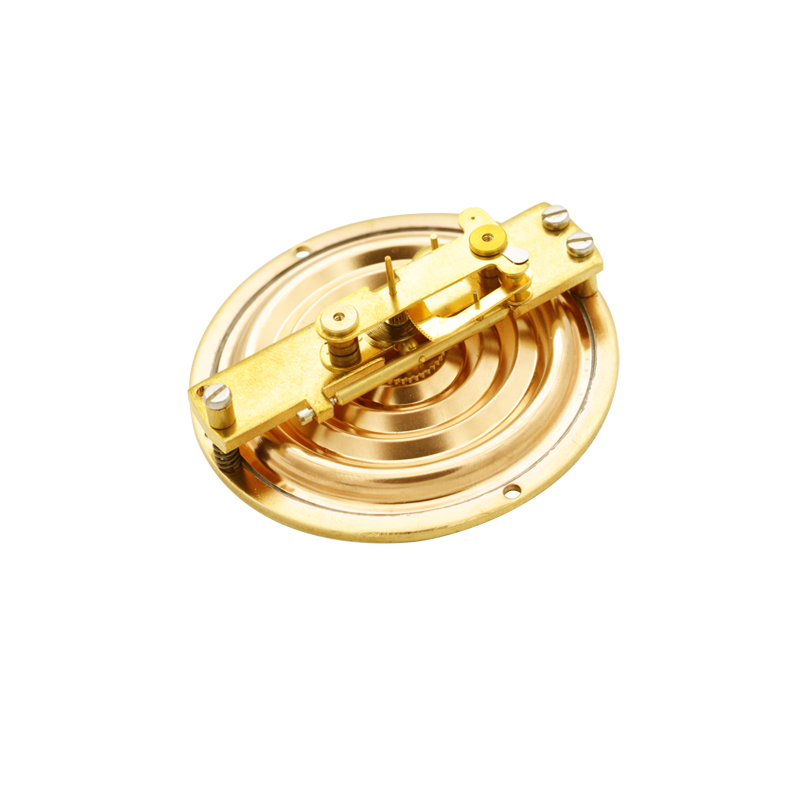
aug . 13, 2024 18:21 Back to list
Understanding the Functionality and Applications of Diaphragm Pressure Gauges in Various Industries
Understanding Diaphragm Pressure Gauges
Diaphragm pressure gauges are essential instruments used across various industries to measure the pressure of gases and liquids. Their reliability and accuracy make them ideal for numerous applications, from industrial settings to laboratory environments. This article will delve into the working principle of diaphragm pressure gauges, their construction, advantages, and typical applications.
Working Principle
At the heart of a diaphragm pressure gauge is the diaphragm itself, a flexible membrane typically made from materials like stainless steel, elastomers, or other alloys. When pressure is applied to one side of the diaphragm, it deforms and creates a displacement proportional to the pressure exerted. This displacement is then converted into a readable measurement through a mechanical linkage, often utilizing a pointer that moves across a calibrated scale.
The diaphragm's ability to flex allows for the measurement of differential, absolute, or gauge pressure. In differential pressure gauges, two pressures are compared, while absolute pressure gauges measure pressure relative to a perfect vacuum. Gauge pressure, on the other hand, measures pressure relative to ambient atmospheric pressure. This versatility makes diaphragm pressure gauges suitable for a wide range of pressure measurement applications.
Construction and Design
Diaphragm pressure gauges consist of several key components the diaphragm, a pressure chamber, a mechanical linkage system, and a display mechanism. The diaphragm is sandwiched between two pressure ports and is typically clamped to ensure a tight seal. The pressure chamber houses the diaphragm and protects the internal mechanism from environmental factors.
In terms of design, diaphragm pressure gauges can vary significantly. They can be found in different sizes, pressure ranges, and configurations. The choice of materials for the diaphragm and casing can be tailored to meet specific requirements, such as corrosion resistance or temperature tolerance. This flexibility in design allows diaphragm pressure gauges to be used in harsh environments, including chemical processing plants and petrochemical industries.
famous explain diaphragm pressure gauge

Advantages
One of the primary advantages of diaphragm pressure gauges is their robustness. They can handle a wide range of pressures, including high pressures, without compromising accuracy. The diaphragm's flexibility also minimizes the risk of damage from pressure surges, making these gauges suitable for dynamic measurement scenarios.
Another key benefit is their high sensitivity, which allows for precise measurements even at low pressures. Moreover, diaphragm pressure gauges have a simple construction, which means that they generally require minimal maintenance. This reliability is crucial in industrial applications where downtime can result in significant losses.
Applications
Diaphragm pressure gauges are widely used across various sectors. In the oil and gas industry, they monitor pressures in pipelines and storage tanks. In food and beverage production, they ensure that processes maintain the right pressures during production and packaging. Additionally, in HVAC systems, diaphragm gauges help monitor air pressure to maintain system efficiency.
Laboratories also use diaphragm pressure gauges for precise pressure monitoring in experiments and reactions, ensuring that conditions remain stable. Furthermore, they find applications in the medical field, particularly in devices that require constant pressure monitoring, such as anesthesia machines.
Conclusion
In summary, diaphragm pressure gauges are vital instruments that play a critical role in various industries. Their straightforward operation, combined with robust design and high accuracy, make them indispensable for effective pressure measurement. As technology advances, the evolution of diaphragm pressure gauges will continue to meet the demands of ever-more complex industrial processes, ensuring safety and efficiency across a multitude of applications. Understanding their functionality and applications is essential for anyone working in fields that rely on precision pressure measurement.
-
High-Precision 5 Valve Manifold Differential Pressure Gauge Suppliers
NewsApr.29,2025
-
High-Precision Diaphragm Vacuum Pressure Gauges Manufacturers & Quotes
NewsApr.29,2025
-
Omega Differential Pressure Gauges High Accuracy & Durability
NewsApr.28,2025
-
Low Pressure Differential Pressure Gauges Precision Solutions & Quotes
NewsApr.28,2025
-
Digital Diaphragm Pressure Gaauge Precision Measurement & OEM Quotes
NewsApr.28,2025
-
Differential Pressure Gauge China Price High-Accuracy & Best Quotes
NewsApr.28,2025
